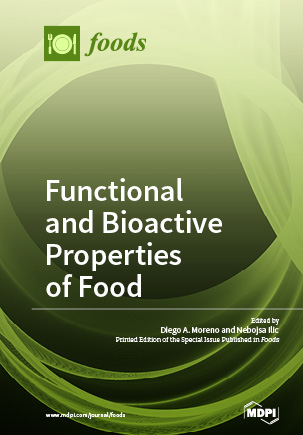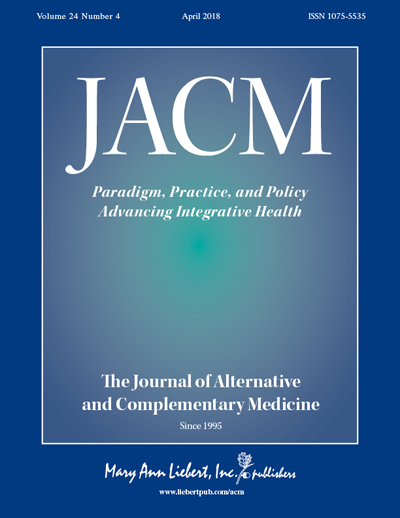Muscle Mass
How to submit an article:
- Registered users can submit any published journal article that has a unique DOI (Digital Object Identifier) name or link to Research Hub.
- For example, you can paste the full DOI link:
https://doi.org/10.1109/5.771073or just the DOI name:10.1109/5.771073into the field above and click submit. - The person who is first to submit a valid article to Research Hub will forever be credited for it, and every article submission earns you +6 Research Points.
Published research studies are articles that present the findings of original research that has undergone a peer-review process and has been made publicly available in scholarly journals, books or other media.

Extra Virgin Olive Oil (EVOO), a Mediterranean Diet Component, in the Management of Muscle Mass and Function Preservation
2022 Aug 30 Nutrients Salucci S, Bartoletti-Stella A, Bavelloni A, Aramini B, Blalock WL, Fabbri F, et al.
The review suggests that due to its anti-inflammatory and antioxidative properties, EVOO supplementation has the potential to delay/prevent the loss of muscle mass and function associated with sarcopenia in aging individuals, emphasizing the need for further research to assess its effectiveness in dietary supplementation.
Theoretical Article Review Article Muscle Mass
Apitherapy for Age-Related Skeletal Muscle Dysfunction (Sarcopenia): A Review on the Effects of Royal Jelly, Propolis, and Bee Pollen
2020 Sep 25 Foods Ali AM, Kunugi H
Bee products, rich in antioxidants and with versatile pharmacological activities, have shown varying positive effects on muscle mass, strength, and function in laboratory animals and limited human studies. Potential mechanisms include reducing inflammation and oxidative damage, promoting metabolic regulation, enhancing satellite stem cell responsiveness, improving muscular blood supply, inhibiting catabolic genes, and promoting peripheral neuronal regeneration.
Review Article Sarcopenia
The Effects of Essential Oil on Salivary Oxytocin Concentration in Postmenopausal Women
2020 Mar 01 The Journal of Alternative and Complementary Medicine Tarumi W, Shinohara K
Randomised Controlled Trial Oxytocin Chamomile Clary Sage Jasmine Postmenopausal SandalwoodCertain essential oils such as lavender, neroli, jasmine, roman chamomile, clary sage, and Indian sandalwood can potentially increase oxytocin concentrations in postmenopausal women.
Research insights are moderated by the Research Hub team and offer an at-a-glance overview of interesting research findings.

2020 The Journal of Alternative and Complementary Medicine
Certain essential oils such as lavender, neroli, jasmine, roman chamomile, clary sage, and Indian sandalwood can potentially increase oxytocin concentrations in postmenopausal women.
Randomised Controlled Trial Chamomile Clary Sage Jasmine Oxytocin Postmenopausal
The Effects of Essential Oil on Salivary Oxytocin Concentration in Postmenopausal Women
Tarumi W, Shinohara K
Review Articles
Review articles summarise and critically evaluate the current state of research on a specific topic or field by synthesising multiple primary research studies.

Extra Virgin Olive Oil (EVOO), a Mediterranean Diet Component, in the Management of Muscle Mass and Function Preservation
2022 Aug 30 Nutrients Salucci S, Bartoletti-Stella A, Bavelloni A, Aramini B, Blalock WL, Fabbri F, et al.
The review suggests that due to its anti-inflammatory and antioxidative properties, EVOO supplementation has the potential to delay/prevent the loss of muscle mass and function associated with sarcopenia in aging individuals, emphasizing the need for further research to assess its effectiveness in dietary supplementation.
Theoretical Article Review Article Muscle Mass
Apitherapy for Age-Related Skeletal Muscle Dysfunction (Sarcopenia): A Review on the Effects of Royal Jelly, Propolis, and Bee Pollen
2020 Sep 25 Foods Ali AM, Kunugi H
Bee products, rich in antioxidants and with versatile pharmacological activities, have shown varying positive effects on muscle mass, strength, and function in laboratory animals and limited human studies. Potential mechanisms include reducing inflammation and oxidative damage, promoting metabolic regulation, enhancing satellite stem cell responsiveness, improving muscular blood supply, inhibiting catabolic genes, and promoting peripheral neuronal regeneration.
Review Article SarcopeniaClinical Trials
Clinical trials are research studies that involve people and are conducted to evaluate the safety and efficacy of new treatments or interventions, such as drugs, medical devices, or behavioural therapies.
Study Protocols
Published study protocols are detailed plans that outline the objectives, methodology, statistical analyses, and organisation of a research study that have been made publicly available for others to review and use as a reference.
Presentation Slides

Randomised Controlled Trial
Certain essential oils such as lavender, neroli, jasmine, roman chamomile, clary sage, and Indian sandalwood can potentially increase oxytocin concentrations in postmenopausal women.
Tarumi W, Shinohara K
Executive Summary
Write an executive summary in the form of a blog article on the topic of "Research into Chinese medicine treatment for Muscle Mass" summarising the research below and using language that can be easily understood by patients and avoiding medical jargon using a professional and caring tone of voice.
Write an executive summary in the form of a blog article on the topic of "Researched Chinese medicine treatments for Muscle Mass" summarising the research below in an objective and easy to understand way, and using language that can be easily understood by patients. Group the article into Chinese medicine treatments first, followed by nutrition and other treatments. Avoid using medical jargon and use a professional and caring tone of voice.
Write me a concise but easy to understand executive summary on the topic of "Chinese medicine treatments for Muscle Mass" based on the following research that I will give you. Your summary should be 2 paragraphs long in Australian English spelling and include references to the studies.
A Randomised Controlled Trial published in 2020 in the journal The Journal of Alternative and Complementary Medicine found that Certain essential oils such as lavender, neroli, jasmine, roman chamomile, clary sage, and Indian sandalwood can potentially increase oxytocin concentrations in postmenopausal women. In this study, fifteen postmenopausal women were subjected to the effects of ten different essential oils one at a time. The oils exposed to included rose otto, sweet orange, lavender, neroli, frankincense, jasmine absolute, ylang ylang, roman chamomile, clary sage, and Indian sandalwood. Initially, they were exposed to a control for 20 minutes, followed by exposure to an essential oil for 20 minutes. Each woman was exposed to only a single kind of essential oil per day. Saliva was collected immediately before and after both control exposure and essential oil exposure. The oxytocin levels in the saliva were then measured. The findings revealed an increase in salivary oxytocin concentrations following exposure to six out of the ten essential oils. Specifically, lavender, neroli, jasmine absolute, roman chamomile, clary sage, and Indian sandalwood were associated with a significant increase in salivary oxytocin when compared to the control odor. This study implies that olfaction stimulation with the listed essential oils might help counter the reduction of muscle mass and function caused by aging in women.
Moderation Tools
Topic
Sign In
Users not signed in are limited to viewing the 5 most recent items of content.